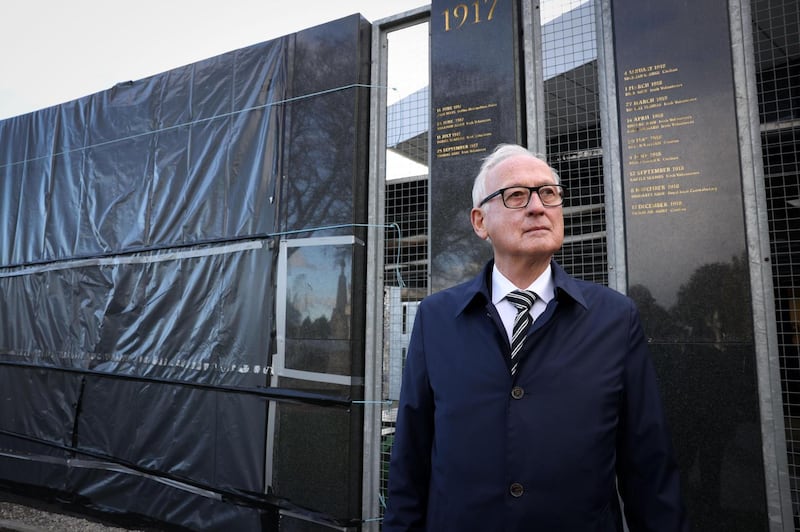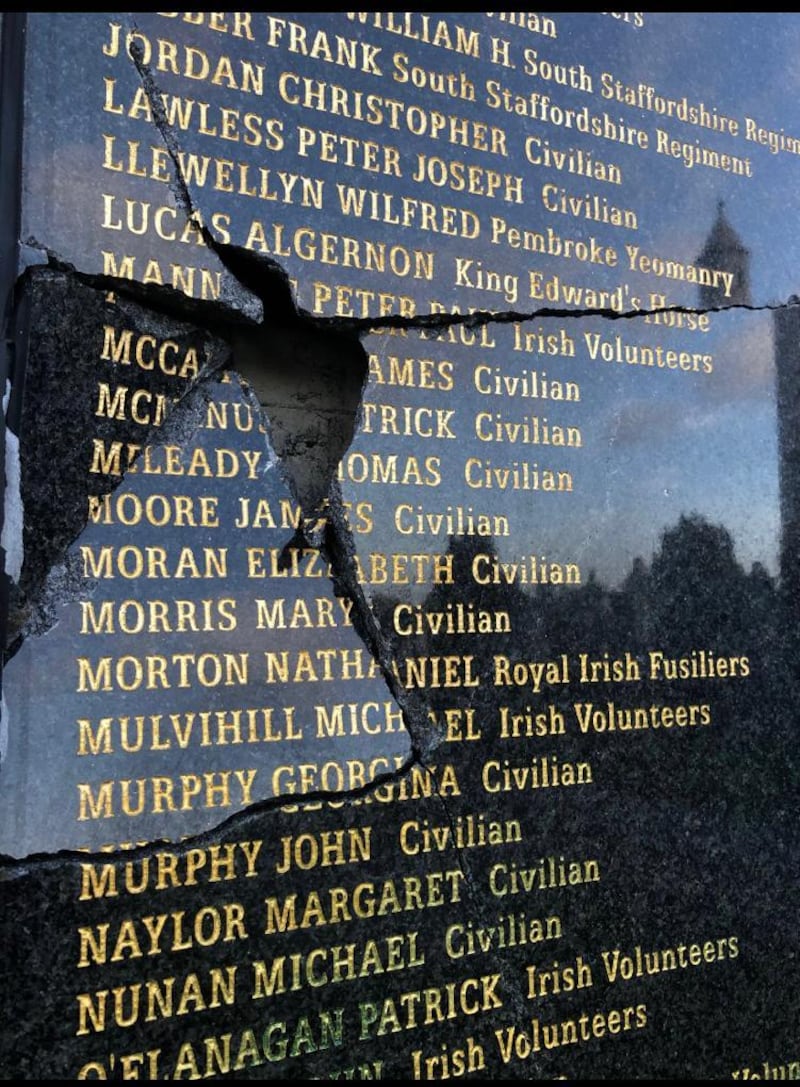A necrology wall erected at Glasnevin Cemetery in Dublin to remember all those who died in the Irish Revolution is being discontinued because of safety and vandalism concerns.
The board of the Dublin Cemeteries Trust took the decision after an "extensive debate", according to its chairman David Bunworth.
He said the wall had been vandalised three times and it would be impossible to stop a fourth such incident. The names of those who died in the Easter Rising will be removed from the wall too.
Instead, he said the trust would erect a separate memorial to all those who died in the 1916-1923 period along with a book commemorating the dead from that period who are buried in the cemetery.

Former minister for justice Charlie Flanagan said the decision by the trust was a "victory for bullies".
"Today's news is not only very sad but in essence a victory for bullying and intolerance. The Glasnevin wall recognised the many different experiences of the tumult of early 20th Century Ireland a country of diversity with many different backgrounds beliefs and aspirations," Mr Flanagan said.
“Sadly today’s decision demonstrates that we have some road to travel towards real respect for the different traditions and multiple narratives of these islands.”
The wall was inspired by the Ring of Remembrance at Ablain-Saint-Nazaire in France which, from 2014, has remembered 580,000 soldiers from all sides killed in the first World War.
The necrology wall was unveiled during the Easter Rising commemorations in April 2016. It sought to remember everybody who died as a result of the violence from Good Friday 1916 to May 1923, when the Civil War ended. It had been anticipated the wall would include more than 4,000 names.
Some objected to it on the basis that it remembered those in British uniform who had died as well as those killed fighting for Irish freedom.
Among those to visit the wall was Britain’s Prince Charles who laid a wreath there on the final day of a four-day visit to the Republic and Northern Ireland in May 2017.
Paint thrown
The wall was first damaged in April 2017 when paint was thrown over it. The paint was removed by cemetery staff, but the gold inlay of the wall’s lettering also came away.

A security camera was installed, but a more serious attack happened in February of 2020. Vandals used a sledgehammer to remove the names of some British soldiers killed in the Rising. In doing so, they also damaged the names of some Irish Volunteers. A tarpaulin was erected a short time later, but a third attack followed.
“The vandalism was getting worse and worse every time it happened,” Mr Bunworth said. “We expected that it would be vandalised again.”
Mr Bunworth stressed that CCTV would have been ineffective in identifying those who might damage the wall as they could easily disguise themselves.
Range of options
The trust undertook an extensive review process to examine a range of options to repair and keep the wall in its current format. These included, but were not limited to, extra security, alternative viewing spaces and enclosing the wall in a protective layer.
However, it said no option could provide a viable, long-term solution given the inevitability of further attacks on the memorial, the trust concluded. Additional security around the wall could have seen vandals target other graves in the cemetery connected with the Irish Revolution, it concluded.
“We did this about peace and reconciliation in a non-hierarchical way, but it is unsustainable to have it rebuilt and redone again,” Mr Bunworth said.
“We never wanted to be divisive. We have taken the decision with great regret. We had a lot of regret about this. We won’t be able to highlight every name and individual, but we will remember everybody in a standalone monument in the cemetery.”
He added that the names of those who died in the Easter Rising have to be removed because the wall was vandalised beyond repair.
Broadcaster Joe Duffy, who wrote a book on the children who died in the Easter Rising, said he was dismayed that the names of those children were being removed along with all the others who died in 1916.
He visited the wall on on Friday afternoon to protest against the attacks with Dubliners Fred and Ann Baker who who are relatives of Eleanor Warbrook (15) who died in the Easter Rising.
“I am deeply saddened and shocked that vandalism and thuggery has triumphed in removing the only memorial in the world that names the children and the civilian men and women killed that week,” he said.
“They are our history. Many are buried in unmarked graves. Surely our mature country can remember all those who died - most of them Irish- regardless of the uniform they wore.”
Dublin City Council independent councillor Cieren Perry said the decision was a "victory for common sense and most importantly a victory for those of us who revere, admire and respect those who sacrificed their lives for the freedom of our country".










